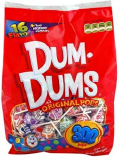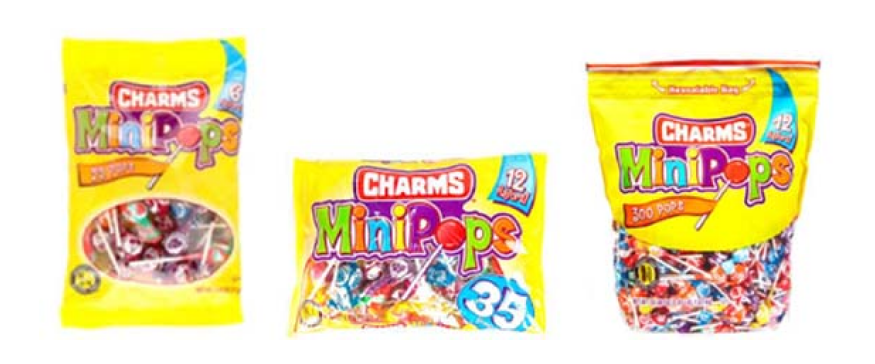Packaging Alert: Do Your Research To Avoid Looking Like A Dum Dums
This case shows the risks of imitating a market leader’s packaging, even if it appears to be common place, without market research and careful consideration.
The Case
The Plaintiff, Spangler Candy Company, manufactures DUM-DUMS lollipops. In 2011, it updated its packaging, as seen below, based on almost two years and over $200,000 of research.

The Defendant, Tootsie Roll Industries, LLC, manufactures the CHARMS lollipops. It was using a yellow package design. But in January 2017, it created a “price and value competition strategy” to “compete with DUM DUMS.” It subsequently also decided to redesign its packaging. In contrast to the nearly two-year process undertaken by Spangler when it refreshed its packaging, Tootsie redesigned its package in only 5 months, and ignored the suggested designs of a consultant. Tootsie changed its CHARMS packaging from predominantly yellow packaging to red:


Spangler sued Tootsie in the US District Court for the Northern District of Ohio for trade dress infringement, claiming that the CHARMS packaging copied three elements of its DUM-DUMS packaging: (1) the brand name in white lettering on a red bag; (2) a display window; and (3) blue numerals in a yellow oval. It then moved for a preliminary injunction to prevent Tootsie from using this packaging, claiming that these three elements made the package distinctive, that they were not essential to its purpose, and that its customers would be confused by the CHARMS packaging.
The court found that the DUM-DUMS trade dress had secondary meaning, despite many candy competitors using similar packaging, because of its significant sales, its use of similar-looking packaging for 23 years, and evidence of Tootsie’s intent to copy the design. It also determined that the trade dress was not functional, although it conceded that the functionality standard in the context of determining secondary meaning is low.
Finally, the court analyzed whether consumers would be deceived by the packaging under the likelihood of confusion factors. It found that the DUM-DUMS packaging was weak and that the presence of the CHARMS mark “strongly reduced” any likelihood of confusion. Also, the court gave little to no weight to Spangler’s expert report of actual confusion. Regardless, the court found that consumers would still be confused by these two products because of circumstantial evidence that Tootsie intended to deceive consumers. Specifically, Tootsie wanted to better compete with Spangler, was aware of the DUM-DUMS packaging, knew that the products would be next to each other in the store and that customers would only take seconds picking a bag based mostly on familiarity, and then chose to invest nearly $1 million in the bag after only a few months of discussion and without any market research. It did not matter to the court that the DUM-DUMS packaging was similar to those of other candy competitors, nor that the CHARMS packaging distinguished itself by using its large brand name; the intent to deceive was enough evidence for the court to order Tootsie to stop using its red packaging design.
Tootsie has appealed this decision and because this came before the court as a motion for a preliminary injunction, the review standards differ from a typical appeal.
The Takeaway
If this decision is allowed to stand, it is a reminder that competitors should choose packaging only after careful consideration, using its typical process, and not rely merely on a large brand name to distinguish the packaging.
Contacts
- Related Practices
-
Read Time
5Minutes
